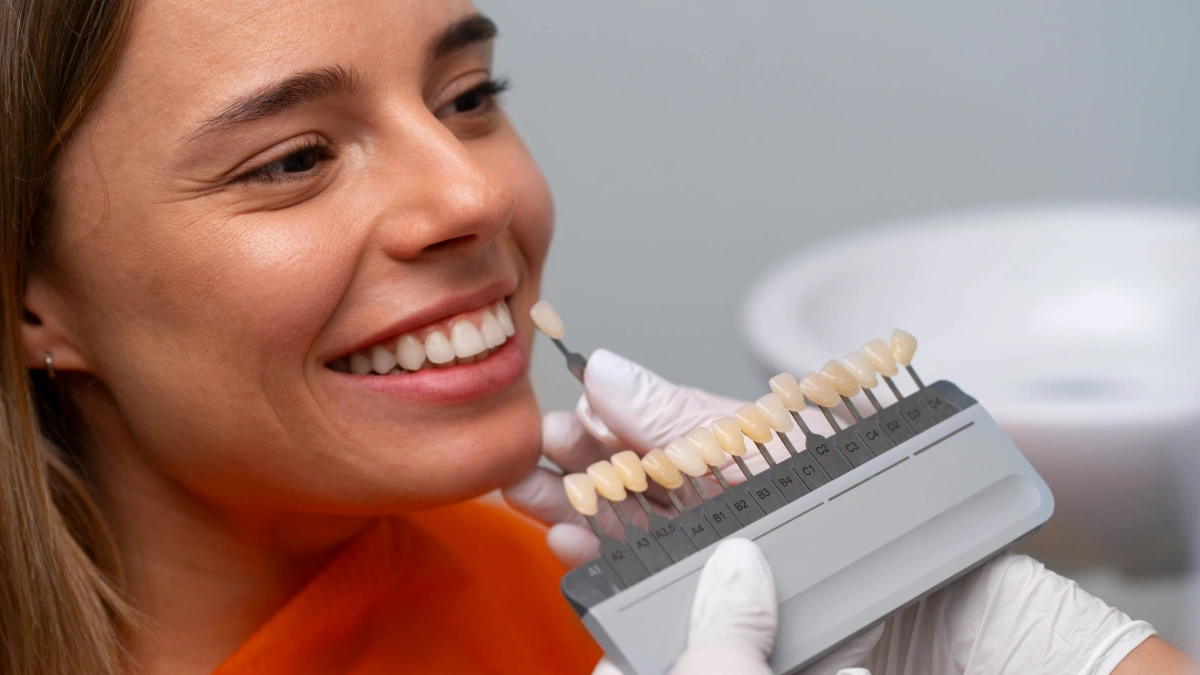
Causes Of High Hairline
-
Genetics: A high hairline can be a hereditary feature from previous generations.
-
Hormonal changes: During puberty or menopause, hormonal fluctuations can cause changes in the hairline.
-
Medical conditions and treatments: Certain medical problems or treatments like chemotherapy can lead to hair loss and a receding hairline.
-
Ageing: Ageing can result in the loss of hair follicles and a receding hairline.
-
Scalp trauma or damage: Scarring from accidents or injuries to the scalp can contribute to a higher hairline.
- Improper hairline-reducing surgery: Incorrectly performed earlier hairline-reducing surgery may result in a higher hairline.
What is Forehead Reduction Surgery?
The hairline and upper third of the face can define one’s gender, as they form the framework for the entire face. Women tend to have a lower, more rounded hairline compared to the square-like shape seen in men. Forehead lowering surgery can bring harmony and balance to facial aesthetics by creating more smooth, curved lines.
An excessively high hairline can lead to reduced self-confidence and limited hairstyle choices for women seeking to cover a large forehead. Generally, a 2cm reduction in brow height is achievable, although sometimes more can be done. The extent of hairline lowering should be agreed upon between the surgeon and the patient before the procedure.
Suitable Candidates for Hairline Lowering
Suitable candidates for forehead lowering surgery may include:
-
Women with a higher than usual hairline and larger forehead.
-
Men with thick, well-defined hairlines and no history of previous hair loss or severe receding hairline.
-
Individuals with thinner forehead skin and good elasticity.
-
For people who perceive their forehead length as disproportionate despite relative dimensions being relatively irrelevant.
-
Those who feel distressed by a high forehead.
-
Individuals with baldness or frontal hair loss.
-
People who constantly style their hair forward to conceal the height of their forehead.
- Those with a large or domed forehead with a prominent frontal bone.
good health and realistic expectations are essential for all patients considering this procedure. Patients with a history of a traditional brow lift may not be ideal candidates. And those with unrealistic expectations should refrain from undergoing this aesthetic procedure.
Preparing For Forehead Lowering Surgery
Preparing for your forehead lowering surgery begins with a pre-operative assessment two weeks before the procedure to discuss medications, diet, and post-operative care. You should stop smoking at least two weeks before and 12 after surgery. You should stop blood-thinning medications and stop using herbal remedies, vitamins, and supplements to minimize bleeding risks. An initial consultation with the surgeon is scheduled to discuss your medical history and reasons for seeking surgery, while also conducting an examination and taking pre-operative photographs. You’re also provided with ample information about the procedure, risks, and potential financial implications of revision surgery if necessary, ensuring you’re well-informed. On the day of the procedure, avoid eating or drinking for six hours prior, and anticipate meeting with the medical team and possibly staying overnight at the hospital.
How Is It Performed?
Following numbing of the forehead, the surgeon makes an incision at the hairline and on the forehead, with the length between these incisions established during the consultation. Excess skin is removed, the two ends are sewn together, and the forehead shrinks as the hairline goes forward. As a result, the scar is often covered at the hairline, making it less noticeable as the hair regrows.
Forehead Reduction Recovery
Recovery after forehead lowering surgery involves returning home on the same day and resuming work or school within 7-10 days. Symptoms such as discomfort, swelling, and bruising can be managed with medication, ice packs, and keeping the head elevated. Strenuous activity and heavy lifting should be avoided for 2-3 weeks, but hair washing can typically resume after a few days.
Following the surgeon’s instructions is crucial for proper healing, including avoiding direct sunlight on the incision site. Temporary numbness and scalp itching may occur, and the final results of the surgery may take several months to be fully visible. Recovery experiences vary, but most people can resume normal activities the day after the surgery with minor pain, redness, swelling, and bruising.
It is common to take about a week off work and wear a headband or hat during the initial recovery period. Stitches are usually removed after one week, and it takes about six months to fully heal and fade.
Benefits of Forehead Lowering Surgery
forehead lowering surgery, often referred to as forehead reduction surgery, presents numerous advantages to individuals bothered by their high hairline.
One of the most significant benefits is the improvement of facial balance. A high hairline might lead to the forehead appearing disproportionately large, which can be rectified by this surgery, ultimately enhancing the overall aesthetic appeal of the face.
A boost in self-confidence is another perk realized following this surgery, allowing individuals to embrace their appearance without resorting to hats or specific hairstyles to cover up a high hairline.
Besides, hairline lowering surgery can render a more youthful appearance due to the reduction of an excessively high hairline that often results in an aged look.
As a permanent solution to a high hairline, this surgery outperforms temporary treatments like fillers or botox. It provides long-lasting outcomes without requiring repeated treatment. Increased hair density at the front hairline region is another bonus of this surgery, especially for individuals with thinning or receding hairlines.
However, the success of forehead lowering surgery procedure depends on good skin elasticity and is devoid of inherent factors such as a family history of pattern balding. Likewise, underlying medical conditions could elevate risk factors during and after surgery.
Potential Risks and Complications of Forehead Lowering Surgery
-
Hair loss or damage to hair follicles.
-
Infections (rare occurrence).
-
Bleeding, hematoma, or fluid accumulation at the surgical site.
-
Risks associated with anaesthesia.
-
Skin or fat necrosis (a rare occurrence).
-
Post-operative discomfort, including pain and swelling.
-
Delayed wound healing and suboptimal scarring.
-
Contour irregularity or asymmetrical forehead appearance.
-
Nerve injury leads to numbness on the forehead or scalp.
-
Over-correction
-
Risk of damage to other structures.
-
Development of a seroma (pocket of clear serous fluid).
- Rare, life-threatening complications such as Deep Vein Thrombosis (DVT), Pulmonary Embolism (PE), or chest infections.
If you are considering a forehead-lowering or forehead reduction surgery in Turkey to enhance your facial appearance and address concerns related to your forehead height, look no further. Our experienced team of skilled surgeons specializes in performing forehead-lowering procedures ensuring natural-looking results tailored to your unique needs. Contact us today to schedule a consultation, get information about forehead reduction surgery turkey price and take the first step towards achieving the confident, harmonious facial proportions you desire. Your journey to renewed self-confidence begins with Avicenna International Hospital.







